Tesla Model 3 is one of the most beloved electric cars of the still-new electric era of automobiles.
The Tesla Model 3 is a popular car for many reasons, but the most popular one is its sleek design and luxurious features. From its spacious interior to its advanced technology, there is no denying that this car has a lot to offer.
The best part is the range and efficiency of the EV with an incredible price point as compared to other available EVs.
Recently, Arthur Frederick (Fritz) Hasler, a proud owner of the Tesla Model 3 shared his three years of EV experience with detailed information on range and degradation.
His review is an excellent reminder of how much EV battery degradation can be avoided by being smart with your EV charging.
After driving Tesla Model 3 for a remarkable 80,000 miles over the past three years and minimal maintenance costs along the way, here’s an in-depth look at Arthur’s Tesla’s battery degradation as well as other pertinent details.
Let’s find out more from his review!
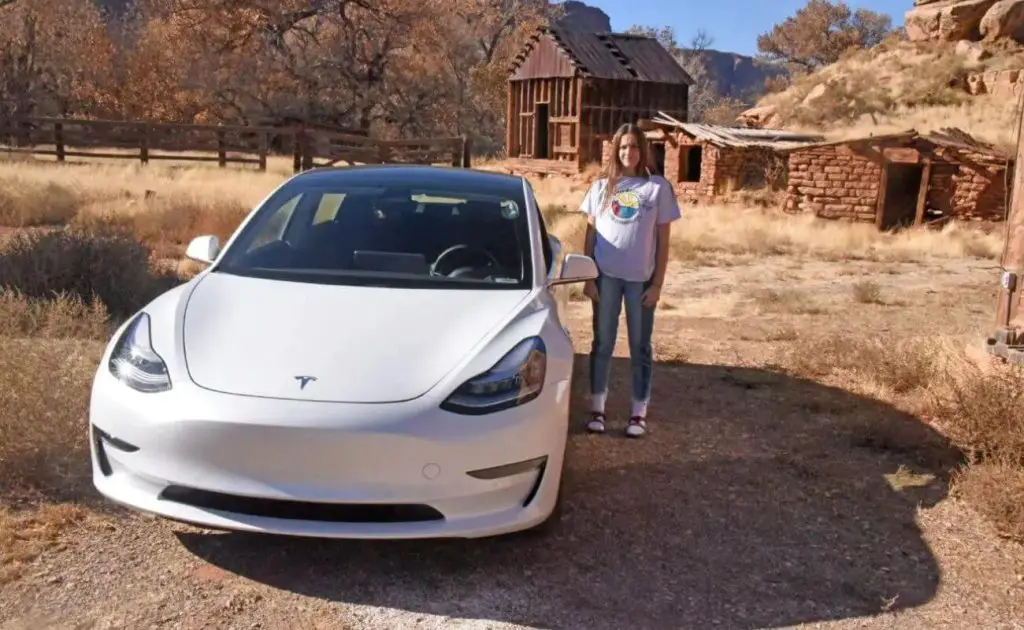
Table of Contents
Tesla Model 3 Three-Year Review
Arthur Frederick (Fritz) Hasler shared his detailed review of the Tesla Model 3 Long Range on the CleanTechnica platform, where he usually shares his EV experiences. On his third Tesla anniversary, he came up with a review including battery degradation, range changes, and maintenance costs in this span.
The final rundown of his Tesla leaves him with 287 miles on the EPA range after 80,000 miles in three years. The change in the range makes up for about 7.4% loss or battery degradation. However, this is an estimated value that comes from the EPA range when connected to a Tesla Supercharger.
Arthur makes sure to keep his Tesla’s battery in good health by maintaining to set the charge limit usually to 80% at home, with occasionally going up to 90% on the road.
Most of the charging he does at his place at home uses level 2 charging, which is gentler than others. On a recent trip where he checked for the EPA on 100% charge on a Supercharger to get the latest range value.
While travelling across states, Arthur says approximately 12,000 Supercharger miles have been logged from trips to Utah, Wisconsin (and back), North Carolina and back, and Southern California and back.
However, 12,000 miles is still a commendable number when you compare it to the total miles driven so far by the Tesla owner.
On a more real-life estimate check when the EV goes down to 0% charge, he says, the distance driven since the last charge shows 251 miles. However, this estimate is based on the speed of the EV and not on Tesla’s algorithm to get a measure. So, comparing that to the 310-mile EPA range of his Tesla, that would mean he lost 19% of its original rated range in three years.
Certainly, a substantial number.
Battery Degradation
Tesla cars are known for their reliable performance and long-lasting battery life. But just how much range does a Tesla Model 3 Long Range lose over time?
You can get the answer to this question by taking a closer look at the range of his Model 3 after three years and 80,000 miles of driving.
It’s worth noting that this degradation would be less if you believe Tesla’s EPA range of 310 miles for the Model 3 Long Range is unrealistically high. When getting the range estimate on the Supercharger, the change is not that significant for a three-year and 80,000-plus mile account.
In short, Tesla cars may not last forever, but it looks like you can get a lot of use out of them before seeing any major range degradation. That’s something worth keeping in mind when thinking to buy an electric or even any other car.
Tesla Model 3 batteries are known for their impressive longevity and low rates of degradation. After thousands of miles, the battery typically still retains up to 95% of its original capacity. This means that you get more bang for your buck over time – no need to worry about replacing a dying battery after just a few years!
In another post, we mentioned a similar feat by Bjørn Nyland who estimated on his Tesla Model 3 after 102,000 miles that his car has about 67 kWh of usable battery capacity, compared to 73 kWh when new (out of 80 kWh total). This implies that the battery has an impressive 91.8% capacity, with only 8.2% degradation!
Bjørn Nyland believes that the excellent result might be attributed to a low rate of DC fast charging. However, it is still merely speculation as battery deterioration depends on components such as its age, mileage, temperature levels, chemistry type, regularity of rapid charging sessions, and how much time the battery spends at high charge states.
Turtle Mode
Electric cars offer a lot of advantages to their drivers, from improved fuel efficiency to lower emissions. But one thing that can be a bit worrying is what happens when the battery runs out of charge. How far will you get before it dies? And if it does die, how do you get going again?
Arthur too decided to find out what happens in such a state when the battery drops down to 0% on his Tesla. When your Tesla goes down to zero miles on the state of charge (SoC) meter restricts your EV to further drive at 25mph for about 10 miles to come to a dead halt or turtle mode.
He was left stranded on a street with his Tesla sitting crossways, a few hundred yards away from home. He took help from his neighbour who offered to tow his Tesla but all in vain as the Model 3 would not budge from its spot. It was not in neutral. With some extension cord, Mobil Connector, and help from his neighbour who has a Chevy Volt.
Thankfully, he was able to get the things sorted in only a matter of minutes to get the car back to his driveway.
The electric car could indeed be pushed down to zero state of charge and still have enough juice left to make it home. Not only that, but it also goes into “Turtle Mode” which limits the speed of your electric car so you can get home safely. It may not be something you want to attempt regularly, but it’s definitely reassuring to know that you can rely on your electric car in an emergency.
When your vehicle’s SoC (State of Charge) reaches zero, it appears you can travel for around 10 miles at ~25 mph before “Turtle Mode” is initiated. To avoid this, pull over in a safe spot after the car has gone approximately 10 miles and put it into neutral.
On a different note, turtles actually swim faster!
Anyways, towing your car may be an option if required to reach an area with charging facilities; however, please note that once the battery runs out completely then steering will no longer be possible.
And if you do find yourself stranded with a dead battery, don’t forget to keep an extension cord handy if nothing works!
Maintenance Costs & Warranty
When it comes to the Tesla Model 3, there’s one thing you don’t want to skimp on: tires. Whether you’re driving in the city or taking a cross-country road trip, your car won’t get very far without a good set of quality tires. The Model 3’s low centre of gravity and powerful motors means that you’ll need tires that can keep up with the car’s performance.
Maintenance Costs
Arthur mentions that he is down to his third set of tires and has spent around $1143 and $480 on new tires and alignment. His major maintenance routine includes tires and alignment. He hasn’t had to spend much on other things. He had a suspension joint replacement which was covered by warranty and a recent repair costing about $500.
He sticks to charging in the garage at 32 amps and 28 mph estimated to be costing around 1/4 of what a similarly sized car would pay for gas.
Even after covering 30,000 miles on a bargain tire set from Kenda Vezda, he says he has some tread left. The branded version tire set also performed well. Arthur points out the same with how increased road noise is annoying him after a worn-out set of tires. This is true for all tires, not just original-equipment tires.
Warranty
The Tesla owner says he is out of full warranty after covering 50,000 miles and soon will go out of the battery and other warranty caps at 120,000 miles.
The only thing he swears about is keeping his Tesla charging in check by maintaining the state of charge between 20% to 80% at most times. He avoids charging to full even when heading out for long trips as he says that this helps keep his battery in a good state.
What To Expect In The Future
Arthur chose to buy Tesla Model 3 Long Range trim after trying three EVs from Nissan before. He owned Nissan Leaf with 80 to 150 miles but needed more juice to comfortably manage his needs to take a 3000-mile round-trip every year.
Being a seasoned professional, he did plan his trips to use his Nissan efficiently with an air mattress and stuff. However, the lack of CHAdeMO charging stations on his route made him choose Tesla. He mentions he had to get ICE car carriers to ship his earlier EVs over three times.
Arthur is in his early 80s and proudly owns his Tesla to successfully be his travel partner. He hopes not to lose so much range in the coming years as the initial years are the ones that see the most changes.
This Tesla Model 3 owner is determined to make the most of his last car. Despite the battery degradation that comes with age and travel cross-country with two heavy mountain bikes on board, he’s still managing to make it work—all while trying to preserve the life of his car for as long as possible.
He says driving a Tesla is an amazing experience, and he and his wife are thrilled with the performance of their Model 3. The availability of Superchargers across the country makes it possible to drive 500 miles per day without ever having to worry about running out of charge. He finds charging at Supercharger extremely easy and convenient for their trips.
Bottomline
Making the switch to an electric car can be a daunting prospect, especially if you’re used to driving a gasoline-powered vehicle. There’s no doubt that electric cars are more efficient and require less maintenance than their gas-guzzling counterparts, but there are still steps you must take to ensure your car runs smoothly and efficiently for years to come.
Arthur Frederick (Fritz) Hasler’s odometer reading after three years and 80,821 miles is a testament to how reliable EVs can be.
It’s great that Arthur would only set the charge limit to 100% to get an accurate indication of the battery’s health. The fact that it was normally kept at 80% and only occasionally going up to 90% shows just how important it is to be mindful when charging electric vehicles.
The Tesla Model 3 doesn’t just stop at its awe-inspiring real-world battery range, spacious cabin, and impressive driving experience; it also offers state-of-the-art driver assistance tech that can be quickly navigated thanks to the central touchscreen designed by experts in both infotainment systems as well vehicle dynamics.
Thanks, or no thanks to Elon Musk, people now have started to have a stronger Love-Hate relationship with Tesla EVs, but with Tesla Model 3, you do get more than what meets the eye!
Do you have any tales of pushing your electric car down to zero SoC and beyond? Feel free to share your experiences in the comments below!
Happy driving!

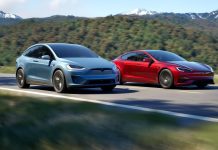



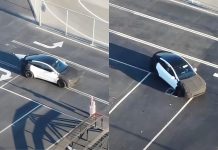









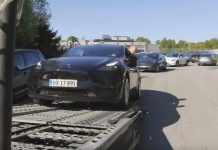
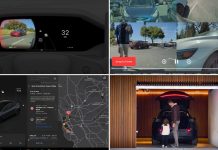
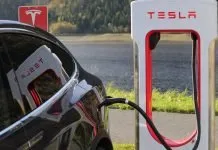

Dear vehiclesuggest.com admin, You always provide great insights.
Imagine an ICE vehicle that it was better if you only fill the gas tank to 80% capacity giving you MAYBE 275 miles range before you ran out. Imagine only have a small percentage of the number of gas stations that are available today. Imagine wondering if the gas pump had been maintained and is operational when you get to it or finded all stalls are in use and you end up dpending over an hour to gas up. EVs may be great for short trips, but at this time I personally can’t see myself putting up with the borher of extended travel in one.
Imagine a world where most of the remaining species have perished, where gas is now $20/gallon, if and when you can get it. You get the idea.
Your comments are completely logical if you stick to self interest. Well almost. Because my self interests are being tickled by my experience driving Tesla vehicles.
Fortunately, the world is being headed to a place where your arguments will make less and less sense. See you there!
That’s because you haven’t tried it! I’ve owned my model three for two years. I’ve only had to wait at a supercharger twice, once for five minutes and the other time for about 15 minutes in Lake Worth. I spend about 15 or 20 minutes charging on the road, Enough time to go to the bathroom and refresh my coffee. I’ve driven all through Florida, Georgia, North Carolina, and South Carolina. Super Chargers are everywhere.
You have just realized the 1920’s because thet is the exact senerio during the 20’s
spoken like a driver who has never driven a Tesla. Drive it and your opinions will change quickly. I actually warn people that I take for rides, if you love your car, don’t go for a ride in mine. You will be very disappointed getting back in your ICE.
Good article. Always great to get confirmation of drivers being happy many years into the experience. For what it’s worth, a super charge my car very routinely. I take it to 90% on most charges. Which locational 98% or so we needed for range. I love stopping at Superchargers and stretching the legs and looking around a bit. Reminds me of motorcycle trips and the last thing I wanna do is throw some gas in and get back on that seat. But I haven’t tested the battery range explicitly, my model, S with 110,000 miles seems to have nearly the same range it to start with. one thing to keep in mind is that the car did not always get the same range on day one that the indicator wanted you to believe. Temperature being the most likely cause. (Much of my driving was done in Michigan, and other cold winter locations. Granted, this car technology is still in its infancy. But it’s pretty funny to hear the ICE driver haters that sound an awful lot like people who were still pulling buggies with horses 100 years ago.
Given my long commute to work and free for me charging at work most definitely.
Previously used a V8 to get to and from work
I have had a Model 3 Long Range for over 2 years and it is the most exciting, fast, and efficient vehicle I have ever owned. I did drive one of the first Honda Insights from 2002 to 2014, so I kind of had a transition car from ICE to EV. What I find most interesting about ICE drivers and their disdain for a fully electric cars, is their sense of expertise on the drawbacks to EVs, when they have never owned one. It is also interesting that they assume I am a novice with ICE vehicles, even though I started driving ICE vehicles in 1967. I have very little desire to convert my ICE (EV hating) friends to EVs so I mostly just listen to their negative arguments until I get tired and hit the accelerator. The amount of silence from them at that moment is directly proportional to the G’s they feel as they sink back into the seat.
PS: The local kilowatt rate in Franklin County, WA is 0.0673 cents per KwH. Today I have16,075 miles on the odometer and I have used 4,141K over the last couple of years. That means I have spent about $278.69 in “fuel” to drive 16,075 miles. (I’ve only paid for supercharging 2 or 3 times so I could add another $50.00). So far my only other expense has been one tire rotation and a few gallons of windshield washer fluid.
PPS: I thought if a Tesla battery was completly drained, the battery was not rechargeable and a replacement battery was required. That has kept me highly motivated to always keep my battery between 20% and 80%.
I wish we would compare apples to apples like we do with normal gasoline vehicles. With gasoline vehicles, you calculate total cost, from what you paid for it to what you traded it in or sold it for. Plus all of the maintenance and gasoline etc. Send you divide it by the miles to see what it cost per mile. It would appear to me that EV owners and writers are petrified to do this knowing that the resale tends to be very low or the replacement battery tends to be more than what you paid for the used vehicle. Just because the government is spending my tax dollars to give tax credits to people that can afford it doesn’t mean it is cost effective. And yes into the writer that talked about the $20 a gallon gasoline if you can get it, when I was in eighth grade which was 1975, I remember them talking about that same situation occurring within years. Oddly enough, it never did, and the sky never fell. The only sky falling or those driving electric vehicles
Hang onto your buggy whip Frank! You missed that he had virtually no maintenance for all those miles. No oil change, no brake pads (regeneration brakes make em last for 100,000 miles or so), and no belts hoses transmission spark plugs, etc to worry about. As for resale, it’s better for Tesla than any other gas wheezers.
Great article! Having owned my Model 3 for 3 years 5 months, accusing 82,600 miles, charging up to 90% about 4 days/week at a level 2 “free” charger at work, and only going to 100% maybe twice a month, my “full range” at 100% today is 284 miles out of 310. I drive mostly in the Northern California Bay Arra, with about 5 SoCal trips and 3 Lake Tahoe when I use the Tesla Superchargers. Never had to wait for open charger.
Tire replacements (3) are my only major expense so fat.
Ambient temperature does seem to be the biggest “factor” in range estimations. So my experiences are almost a mirror of this writer’s experiences. The only real difference between the author of this article and me is I’m ten years younger! Lol!